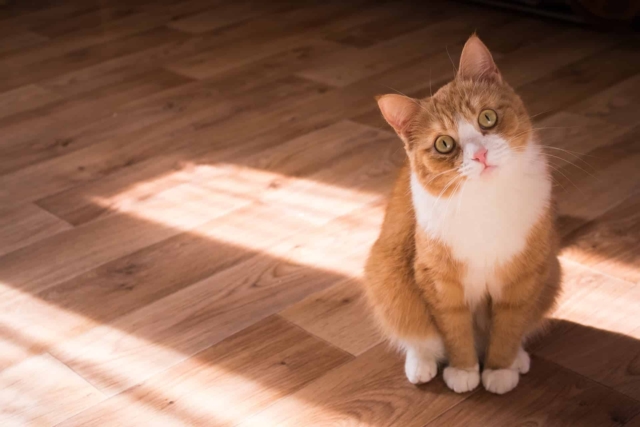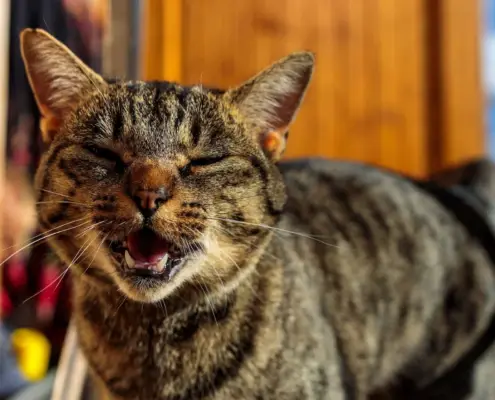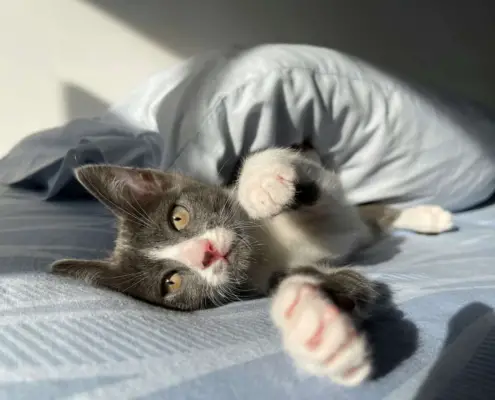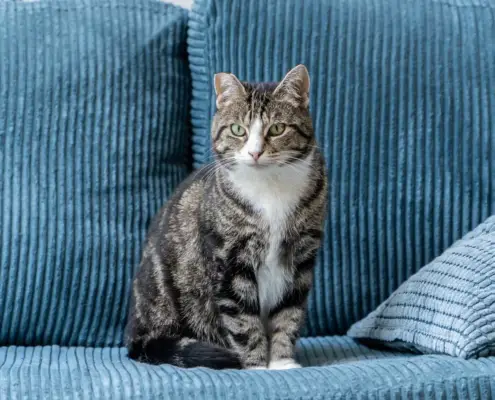
Cats have always fascinated humans with their grace, agility, and strength. Their ability to jump effortlessly, climb trees with ease, and pounce on their prey with precision leaves us in awe. Have you ever wondered what makes these feline creatures capable of such remarkable feats? It all comes down to their incredible physiology, particularly their muscular system. In this article, we will delve into the number of muscles cats possess and explore how these muscles contribute to their everyday lives.
Understanding the muscular system in cats
The muscular system is an integral part of any living organism, and cats are no exception. Cats have a highly developed muscular system that allows them to perform a wide range of movements. Their muscles are composed of long, slender fibers that contract and relax to create movement. These muscles are attached to the bones through tendons, which act as a bridge between the muscles and the skeletal system.
The number of muscles in cats
Now, let’s address the burning question: how many muscles do cats have? While the exact number may vary slightly depending on the individual cat, on average, cats have around 500 muscles in their bodies. These muscles are distributed throughout the cat’s entire body, from their head to their tail. Each muscle serves a specific purpose and plays a vital role in their overall physiology.
Comparing the number of muscles in cats with other animals
To put the number of muscles in cats into perspective, let’s compare it with other animals. Dogs, for example, have roughly the same number of muscles as cats. However, when we look at larger animals like elephants or horses, the number of muscles increases significantly. Elephants, for instance, have over 1,000 muscles in their trunks alone, which is more than double the number a cat possesses. These differences in muscle count are a result of the diverse needs and adaptations of different species.
The role of muscles in a cat’s everyday life
Muscles play a crucial role in a cat’s everyday life. They enable them to perform various activities such as running, jumping, climbing, and hunting. The muscles in a cat’s legs, for example, allow them to leap great distances and land with precision. Their abdominal muscles provide them with the strength and stability needed to maintain balance while climbing trees or navigating narrow spaces. Without well-developed muscles, cats would not be able to exhibit their signature feline grace and agility.
How cats use their muscles for hunting and agility
Cats are natural-born hunters, and their muscles are finely tuned for this purpose. When hunting, cats rely on their strong leg muscles to pounce on their prey with lightning speed. These muscles allow them to accelerate rapidly and change direction swiftly, giving them a significant advantage over their prey. Additionally, cats have powerful jaw muscles that enable them to deliver a swift and lethal bite to their target. Their muscles work in perfect harmony, allowing them to execute their hunting strategies with precision and efficiency.
The importance of muscle health in cats
Just like in humans, muscle health is vital for cats. Strong and healthy muscles contribute to overall well-being and quality of life. Regular exercise is crucial for maintaining muscle health in cats. Engaging in playtime activities that encourage running, jumping, and climbing helps keep their muscles strong and flexible. Additionally, a balanced diet that provides the necessary nutrients and proteins is essential for muscle growth and repair. It is also important to monitor your cat’s weight, as obesity can put unnecessary strain on their muscles and lead to health issues.
Tips for keeping your cat’s muscles strong and healthy
Here are a few tips to help you keep your cat’s muscles strong and healthy:
- Provide regular exercise opportunities: Engage your cat in play sessions that encourage physical activity, such as chasing toys or using interactive toys that require them to move.
- Feed a balanced diet: Ensure your cat’s diet includes high-quality protein sources, as well as essential vitamins and minerals, to support muscle health.
- Monitor your cat’s weight: Obesity can lead to muscle strain and other health problems. Keep an eye on your cat’s weight and consult with your veterinarian if necessary.
- Regular veterinary check-ups: Regular check-ups allow your veterinarian to assess your cat’s overall health, including their muscle condition.
Fun facts about cat muscles
- Cats have the ability to rotate their spines nearly 180 degrees due to their flexible muscles and vertebrae.
- The muscles in a cat’s ear allow them to independently move each ear, helping them locate the source of sounds accurately.
- A cat’s tongue is a remarkable muscle that plays a crucial role in grooming and feeding. It is covered in tiny, backward-facing barbs called papillae, which aid in cleaning their fur and lapping up water.
Conclusion
Cats possess an incredible number of muscles that enable them to perform extraordinary feats. From their precise hunting techniques to their agile movements, cats rely on their muscular system for their everyday activities. By understanding and caring for their muscles, we can ensure our feline companions lead healthy and fulfilling lives. So, the next time you witness your cat’s graceful leaps or their lightning-fast reflexes, remember the remarkable physiology that makes it all possible.
If you enjoyed my article, I would appreciate you sharing it with your network.

Sima Ndlebe
Sima writes for CatBuzz. He is interested in Cats, Health and Fitness, and Entrepreneurship.
Published: 30 October 2023




